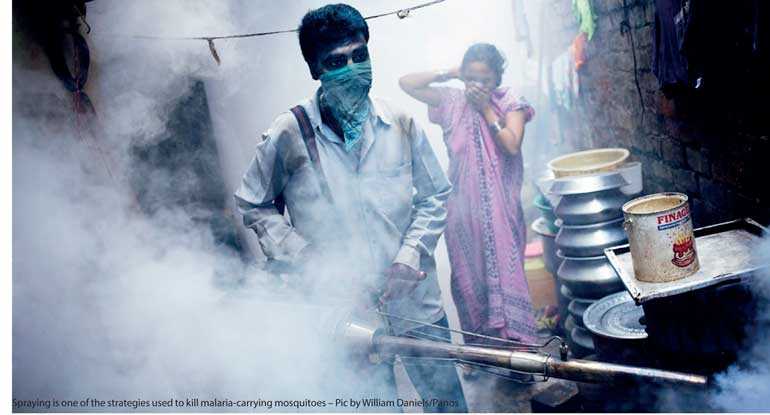Monday Nov 17, 2025
Monday Nov 17, 2025
Wednesday, 17 October 2018 00:00 - - {{hitsCtrl.values.hits}}

www.scidev.net: Malaria once ravaged Sri Lanka, killing thousands of people, reducing economic growth and depleting entire communities. Today, Sri Lanka is celebrating two full malaria-free years, an achievement that few other countries in the region have achieved.
To succeed, Sri Lanka had to overcome huge challenges, including two decades of civil war and heavy population movements across borders – factors that left the nation highly receptive to the spread of malaria.
“Sri Lanka’s success has demonstrated that elimination is possible in Asia Pacific, and in tropical settings more broadly. This is important. In Asia Pacific, two billion people are still at risk of contracting malaria,” said Benjamin Rolfe, Asia Pacific Leaders Malaria Alliance.
There is a long and rich history to the country’s efforts to control malaria, with periods of extraordinary gains punctuated by deadly resurgences. Following the first anti-malaria campaign in 1911 were decades of extensive indoor spraying to kill the mosquitoes carrying the malaria parasite and widespread distribution of medicines. By 1963, Sri Lanka was tantalisingly close to eliminating the disease with only 17 malaria cases reported.
But then malaria resurged, as it has done in so many other places in Asia Pacific and across the world. The malaria parasite is clever. It adapts to its environment. A small reservoir of parasites can quickly grow exponentially. So, when Sri Lanka reduced malaria control activities in the mid-60s, the disease came back with a vengeance. In 1969, Sri Lanka reported over 537,000 cases, an enormous increase in just a few years.
Sri Lanka was able to learn from this experience and reinforced its campaign against the disease. By October 2012, Sri Lanka reported its last indigenous case of malaria and was finally certified malaria-free by the WHO in 2016.
Political commitment is key
How did Sri Lanka win the war against malaria, overcoming so many challenges and setbacks? The answer is deep political and financial commitment, a steadfast response firmly focused on ending the disease and good coordination across sectors.
Learning from its experience in the 1960s, Sri Lanka prioritised malaria funding. Mosquitoes were targeted, the population was provided with bed nets and medicines against the parasite and strong surveillance systems were set up to monitor outbreaks.
When the country experienced a resurgence of insecticide-resistant mosquitoes and drug-resistant malaria, it adopted a change in strategy, stressing the need to eliminate both parasite and vector. The government improved disease surveillance and efforts to interrupt transmission, in addition to spraying structures and distributing bed nets.
Mobile malaria clinics were set up to diagnose and treat people early alongside community engagement and education programs. With support from the Global Fund to Fight AIDS, Tuberculosis and Malaria, funding was directed to clinician awareness programmes and malaria testing in the villages.
Despite an ongoing civil war at the time, the two opposing parties also recognised malaria as a common enemy and agreed to stop fighting when anti-malaria work was being carried out. A peace accord was even signed to facilitate the containment of war-induced malaria in affected regions and among war-displaced populations.
Finally, Sri Lanka recognised that elimination cannot happen in a vacuum. It requires that governments, NGOs, businesses, technical agencies and grant makers work together with one common objective. (Source: https://www.scidev.net/asia-pacific/malaria/opinion/sri-lanka-shows-that-malaria-can-be-eliminated.html)